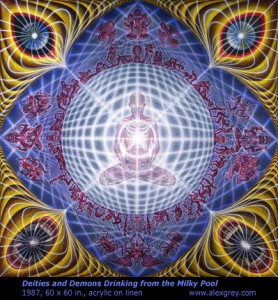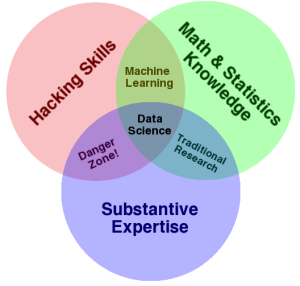
Alex Gray and the Mind Parasites
Jonathan Zap
Reality Sandwich
EXTRACTS:
Alex began to have an out-of-body experience, and found himself hovering above the weirdness of what was going on in the loft. On some different plane he saw deities drinking from a pool of “electric milk” a “vast lake of timpani,” of “vibrating energy.” Alex described the vision as follows:
“I had a vision of the group soul of humanity as a perfectly circular pool of intense living light. All around the rim of the milky pool were a complex variety of sexual rites, a metaphor for all social interaction. Translucent Hindu deities swooped over the group taking the excessive energy of the shimmering pool and passing through the group as ecstasy and pain. I saw that the reason we were all brought together was to provide a psychic energy feast for the Gods and Goddesses. I saw my heart as the axis of karmic, earthly, and universal energies, transected by and uniting the polarities of male/female, birth/death, good/evil, and love/hate. To maintain a balance of forces we all fed both Deities and Demons.”
This visionary experience eventually became the masterpiece: Demons and Deities Drinking from the Milky Pool.
. . . . . . . .
The Archons are masters of deception who manipulate by encouraging us to give away our power to external saviors and authorities. We become like the living dead when they succeed, like Tolkien's Ring Wraiths–withered, obsessed beings forever craving but unable to reach “The Precious,” which could take the form of an object or person of desire, or a fanatic ideology/fundamentalist religion that enslaves us to its version of salvation.




